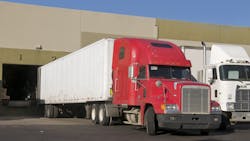On-time deliveries are the No. 1 goal of most fleets. Of course, they want those deliveries made in a safe and efficient manner. But what does on time actually mean? It can denote different things to different people.
For example, some customers are fine with the order arriving on the day it was promised, while others have a tight delivery window of just a few hours. Regardless of how on-time delivery is defined, for goods to arrive on time, trucks must depart the yard on time.
According to Dave Beaudry, director of logistics engineering and consulting at NationaLease, “a metric that we find to be the most effective is tracking on-time departure along with reason codes.” He said lots of things can affect delivery times once the truck leaves the depot, “but the driver along with the truck being in the right place at the right time, then getting loaded and on the road in a timely manner, is the first step toward the delivery being on time.”
In these days of transparency in the supply chain, estimated time of arrival is a critical component for setting expectations. Beaudry said several factors go into developing a good ETA, including early predictions, accounting for as many variables as possible, real-time updating to account for changes, accounting for the waterfall effect, and communication and notifications.
When delivery times are missed, the shipper may have to pay late fees or issue refunds. Studies show that 60% of people who have had a bad shipping experience will purchase elsewhere next time. However, 71% will overlook a delay if they are notified in advance about it. Not surprisingly, 55% will stop doing business after two or three late deliveries with notifications about lateness.
To develop the most accurate ETAs, you need a strong network design and modeling tools along with advanced route-planning tools. That also involves a connected data ecosystem, visibility into the entire delivery process, and tools for alerting everyone in the supply chain about delays.
Jane Clark focuses on managing the member services operation at NationaLease as vice president of member services. She works to strengthen member relationships, reduce member costs, and improve collaboration within the NationaLease supporting groups.
About the Author
Jane Clark
Senior VP of Operations
Jane Clark is the senior vice president of operations for NationaLease. Prior to joining NationaLease, Jane served as the area vice president for Randstad, one of the nation’s largest recruitment agencies, and before that, she served in management posts with QPS Companies, Pro Staff, and Manpower, Inc.
